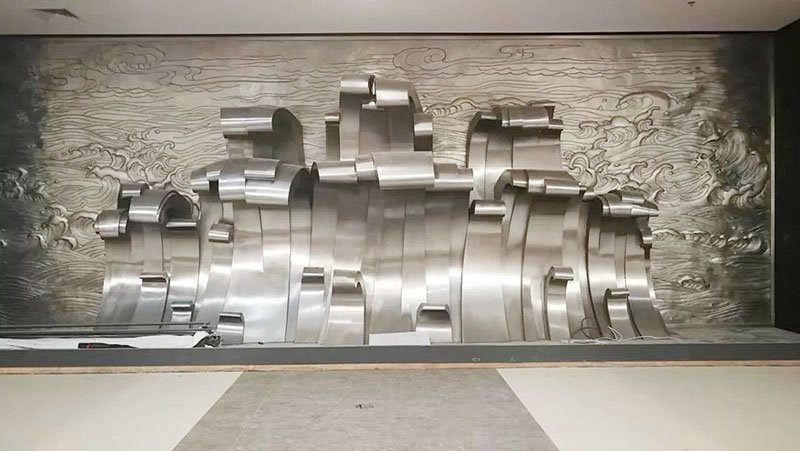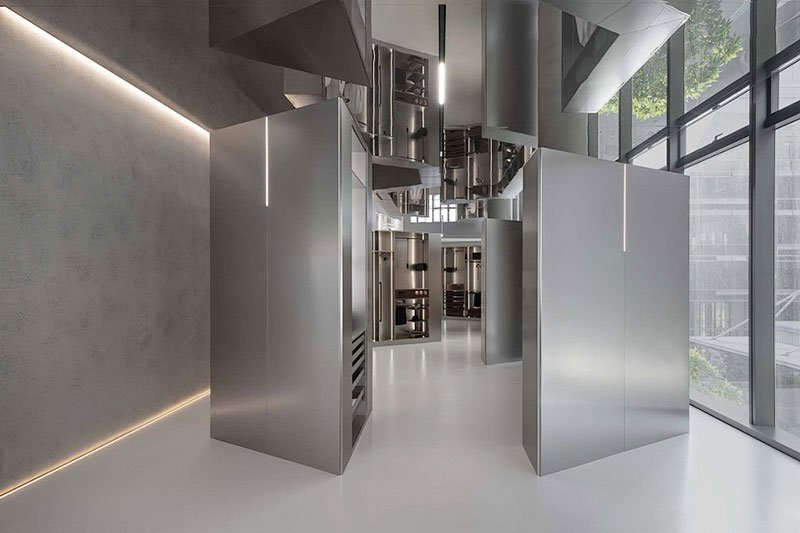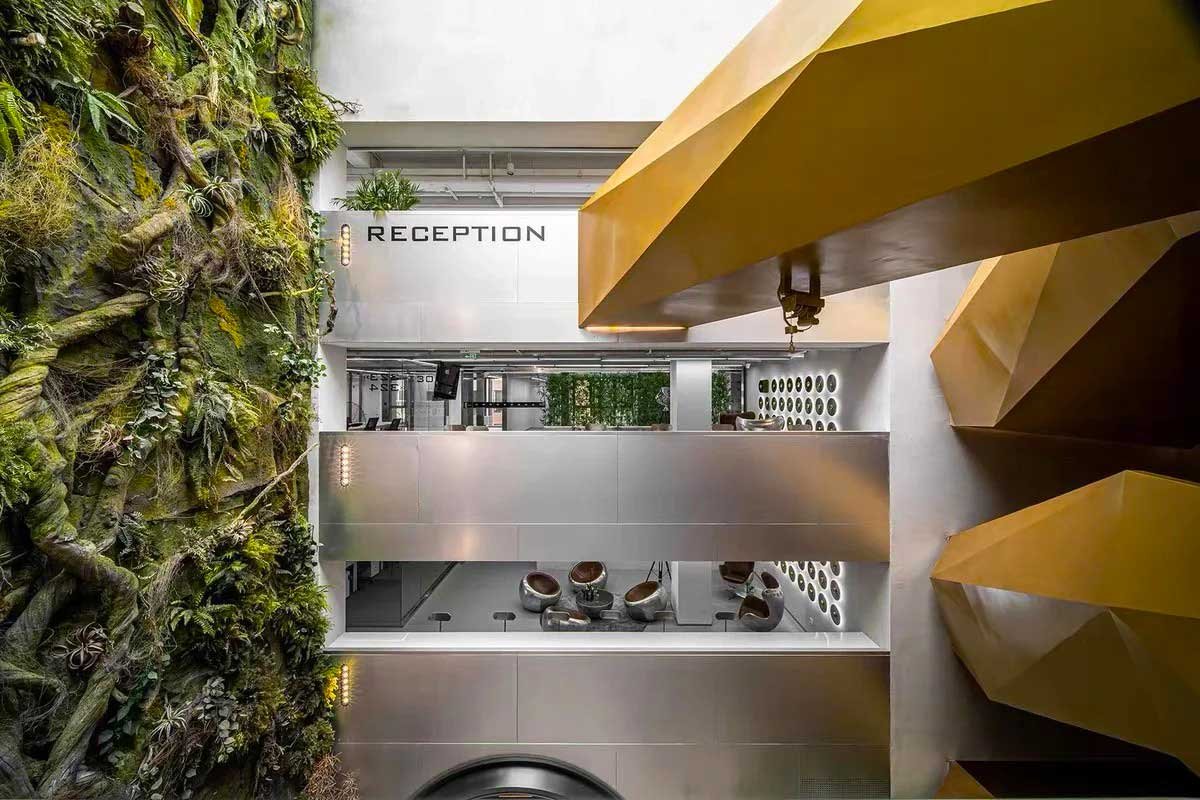Museum Uses Stainless Steel: A Modern Solution for Interior Design
Table of Contents
Of course, the first thing that usually crosses one’s mind when museums come into the discussion are some forms of astonishing treasure inside them, such as ancient relics, timeless sculptures, and renowned paintings. But have you ever stopped to think about the buildings themselves? The structure, design, and choice of materials in the establishment of this space are of utter importance to complement the work on display. Indeed, the ambient context of our observation drastically affects our work experience.
One material that has started to play a major role in changing the face of museum interiors is stainless steel. Why is this strong, bright metal becoming the modern designer’s muse for museums? The reason is the peculiar combination of beauty and functionality that corrosion-resistant steel brings into play. It is not enough that museums are mere houses of storage and display for works of art; they have to be works of art themselves. Rustless steel is helping carry this dream forward.
In this article, we take a look at how this shiny steel sets the tone and texture of today’s modern museum space. You’ll see why both large and small museums incorporate this multi-purpose material in an effort to enhance their interior with beauty and functionality.
Why Are Museums Choosing Stainless Steel ?
Before we get into the nitty-gritty of how stainless steel is actually used in museum design, let’s first ask: why do so many designers and curators flock to it? What sets this material apart in a sea of options? The answer lies in its ability to marry both practicality and aesthetic appeal.
Durability for Long-Lasting Use
Museums are the houses of priceless pieces of art, rare artifacts, and generally delicate objects that cannot easily be replaced. Because of this, durability has been a huge factor in the choice of materials for museum interiors. On the durability scale, corrosion-resistant steel stands out. Its strength lies in its resistant capabilities to rust, corrosion, and stains, therefore acting perfectly in places where changes in temperature and humidity are likely.
Think about it: a museum might have thousands of visitors every day. With so much foot traffic, many materials would start to wear down over time. Not stainless steel. Whether it’s used for gallery walls, staircases, or furniture, corrosion-resistant steel can withstand heavy use without losing its strength or beauty. It’s the perfect solution for creating museum spaces that need to stand the test of time.
A Sleek and Modern Aesthetic
Besides being extremely durable, rustless steel has that sleek, polished look that gives a contemporary feel to any space. The reflective surface of this steel enhances the lighting in the room and adds a clean, modern look without competition with the art on display.
It’s neutral enough to complement whatever type of artwork, from classical paintings to the most cutting-edge sculpture, yet still says something. This is the key when designing a museum. One would want to create an environment where art will be at its best. With corrosion-resistant steel walls, fixtures for displays, and furniture, museums can design interiors that feel open and minimalist with great sophistication. It creates an environment allowing the viewer to focus on the artwork, yet is also eye-catching in their own right.
Eco-friendly and Sustainable
In today’s world, sustainability is a major concern; hence, many museums are working toward being more eco-friendly. This is where stainless steel will excel because it is 100% recyclable. This means that this steel can be used time and again without losing any of its strength and quality, thus reducing waste and saving natural resources.
With more and more museums moving towards green buildings, rustless steel is really a solution for both the green environment and the design of the place. Its longevity and recyclability are very apt for people who want to ensure minimum environmental impact caused by such construction.

Where Can Stainless Steel Be Used In Museum Interiors ?
Now that we can understand why corrosion-resistant steel is such a popular choice for museum designers, let’s get specific about where exactly it’s being used to revolutionize museum interiors. How does corrosion-resistant steel fit into the various parts of a museum?
Display Fixtures and Gallery Walls
The most common applications of stainless steel in museums are for gallery walls and display fixtures. These are essential for the presentation of artwork in an attractive and safe manner. The neutral color of corrosion-resistant steel allows the art to be the focus without distraction, while its shiny surface can even create interesting reflections that enhance the visual experience.
Beyond its aesthetic qualities, rustless steel also houses incredible strength, making the support of even the biggest and most fragile items possible. For artworks that are big, big sculptures, small yet very fragile, like the canvas of a painting, they get to be held tight, securing them from breaks by the corrosion-resistant steel artwork itself.
Architectural Features: Staircases, Railings, and More
Also, this steel is used in many pieces of furniture and other interior-designed elements within museums. Such areas consist of benches, tables, and even light features done in rustless steel that tend to add a bit of style to the interior design settings of a museum.
And it’s also easily serviceable and maintainable, which makes it practical to get applied to those spots wherein people congregate, either simply waiting or over cafes. The clean, shining look of this steel provides the environment with a spacey feeling, offering hints at being modern while almost timeless.
Furniture: Putting Function with Style
Although the work of art may be what one considers being upfront in any museum, the furniture certainly plays a key role in terms of visitor experience. And now, from seating to shelving units, this steel is showing its face in museum furniture. Why? It is one tough material that withstands all wear and tear kinds associated with high-traffic areas.
Beyond the strength, corrosion-resistant steel brings an aesthetically clean, industrial feeling to any space. From polished shiny steel benches in galleries to sleek bookshelves in education spaces, the material continues to modernize the look of the museum with functional, long-lasting solutions for visitors.
Signage and Wayfinding: Helping Visitors Find Their Way
Large museums are sometimes a bit quirky to navigate, and that’s where signs and wayfinding systems come in handy. In the creation of such signs, stainless steel is put into use, which is fashionably appealing and easily readable. With its smooth surface and reflective finish, this steel can highlight signage while providing clear directions to guests.
Be it directional signs toward a display or descriptive labels on the artwork, it keeps the information readable and resilient in high-traffic areas.
Additionally, the wear and tear resistance from the material ensures that signs and labels remain intact and in excellent condition for many years to come, providing continued clarity to visitors.
Lighting Fixtures: Enhancing Museum Atmosphere
Of all the elements that make an excellent museum experience, lighting really helps to create a specific environment, one where stainless steel can become quite masterful in designing light fixtures for this need-from pendant lights to track lighting.
But there’s more to it than just aesthetics. This steel is also heat-resistant, making it a safe choice for fixtures that will be exposed to high temperatures. So, not only does it add to the museum’s visual appeal, but it also contributes to the safety and functionality of the space.

How Various Museums Are Successfully Using Stainless Steel ?
You might wonder if there are any museums that actually use corrosion-resistant steel in their designs. Yes, there are many, and the results are amazing. Let’s take a look at a few examples of museums around the world that have successfully incorporated corrosion-resistant steel into their designs.
Guggenheim Museum, Bilbao
One of the most recognizable manifestations of this steel is at Bilbao’s Guggenheim Museum. This museum, by Frank Gehry, is known for its curvy, futuristic architecture, all in stainless steel and titanium. The building grew to be a work of art where, even inside, the material continually plays a major role in modern construction, giving a sleek taste. Be it in the display cases or the sculpture installations, corrosion-resistant steel is everywhere, enhancing the exhibits and the architectural features of the space.
Louvre Abu Dhabi
Another great example is the Louvre Abu Dhabi, where rustless steel again plays a significant role in designing the striking dome of the museum. This dome, made from stainless steel and glass, allows filtered natural light into the building, illuminating the interior space in a certain way. On the interior, corrosion-resistant steel can also be found within furniture, display cases, and security, enhancing the modern minimalist design of the museum.
National Museum of African American History and Culture
Another impressive use of this steel in design within Washington, D.C., is at the National Museum of African American History and Culture. The famous lattice work outside the walls of the museum is actually made with bronze-colored steel, while the inner side uses stainless steel in everything from display cases to railings. It serves as a connecting item that ties together the exterior and interior of the museum in harmony and cohesiveness.

In Conclusion
As we’ve seen, stainless steel offers museums a unique blend of aesthetic value, durability, and sustainability. From aesthetic enhancement to structural support and improvement in visitors’ experience, corrosion-resistant steel shapes the future of museum design.
From the iconic Guggenheim to smaller, locally loved museums, this material proves to be one of the most versatile and essential ingredients in the modern museum. So, the next time you visit a museum, take a moment to appreciate not just the artwork on display but also the beautiful, functional design elements that make the space a true masterpiece in itself.
So, ready to take your museum design to another level with corrosion-resistant steel?
Here at JYF Metal, the ideal team is on-site and ready for service in developing shiny steel solutions that have definitely beautified and enhanced the function of one’s museum area, be it a new building of a museum or an upgraded museum. From concept to completion, let us put your vision into reality with our corrosion-resistant steel products. Let’s create spaces that inspire! Contact Us Today.
You Might Also Like
Please Share This
Follow Us On Twitter
On-site Installation of Stainless Steel Screen Partition
Precision-made. Professionally installed.
Transforming spaces with durable, elegant metal dividers.
📮DM us for custom design and project support.
#interiordecoration #metalpartition #roomdivider #sheetmetalfab
Café Design | A Sensory Collision of Metal and Coffee
This design is from BOUNDLESS SPACE DESIGN OFFICE
If you are interested in stainless steel decorative materials, please contact me for a quote !
Email: claire@jyfmetal.com
#interiordecoration #decorativematerials #metallic
Stainless Steel Fluted Panels & Skirting Boards
Clean lines, large size, premium finish — perfect for luxury interiors.
Custom colors, surface treatments, and dimensions available.
📩 DM us for catalogs or project solutions.
#flutedpanels #metalskirting




